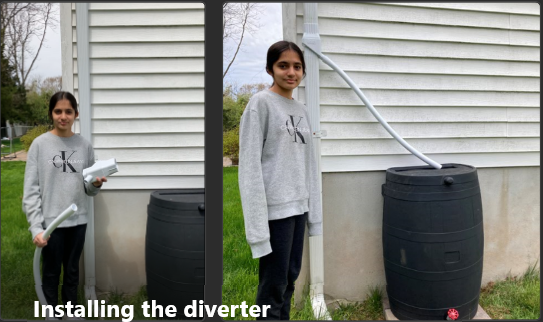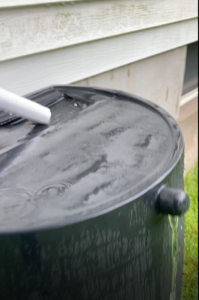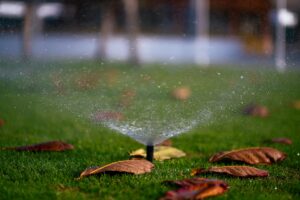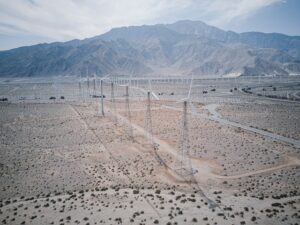Rainwater harvesting, also known as rainwater collection, is the process in which water is captured and stored for later use. So what is the purpose of this?
Countries such as Ethiopia, Papua New Guinea, and Uganda lack access to basic drinking water. On August 16, 2021, the federal government declared low water levels in Lake Mead. They issued a water shortage on the Colorado River. Western America is experiencing its worst drought in centuries. It is proven that the years 2000-2021 were the driest period of time in 1,200 years for this region. Water crises all over the world, are nothing but human causes.
Many people use sprinklers to water their lawns. Nonetheless, this water is actually tap water that has been purified for our daily activities. Also, plants benefit from the rainwater minerals, that our purified water lacks. Purified water won’t harm the grass in any way, but it will slow down the growth of your plants.
This got me thinking about why we are throwing drinking water onto our lawns when we are headed towards a drinking water crisis. It eventually resulted in the idea of rainwater harvesting and trying to use it to water the lawn.
Rain Barrel:
First, I had to find a rain barrel and decide its size. To find out the rainwater harvesting potential of your roof, multiply the area of the roof by inches of rainfall, to find out how much can be collected. In theory, approximately 0.62 gallons of water per square foot of roof area, per inch rainfall. It is estimated that about a quarter of this total will be lost to evaporation and rain bouncing off the surface.
I ended up buying a rain barrel that could sustain 50 gallons of water to start with. I can easily add more barrels by attaching a pipe between them. I also didn’t want insects or debris falling into the barrel, so I made sure that a protectant screen came with the purchase. The screen is placed directly above the barrel. The small holes allow water to pour, and ensure that leaves and other debris don’t fall in.

Diverter:
The second thing I need is a diverter to pipe the water from the downspout to the rain barrel. There are different types of diverters. Some diverters channel the water in the direction of the barrel. When the rain barrel is full, the diverter will shut off, and the water will continue its regular path down the pipe. But how does the diverter know when to shut off?
The diverter actually uses the backpressure of the entire rain barrel, and it prevents more water from entering. However, when I read the reviews, many people said that the water was leaking and the backpressure wasn’t working. So I decided to go for a simple diverter that will channel the water into the rain barrel and the barrel will have an overflow spout. Find a diverter that fits your downspout, whether it’s rectangular or circular.
Now I needed some money to buy these things. It took a while to convince my dad that eventually, he would save money using rainwater to water the lawn. Of course, he then helped me cut the downspout and attach the diverter.

Now we have to wait for rain. It looks like it’s not going to rain for a while…
When it finally started raining, I ran outside with an umbrella to check the barrel.
The rain barrel actually fills up faster than you’d think. This results in “overflow”. I have to solve for the overflow later since it’s creating a mess in the areas surrounding the barrel.

After the rain is over, I attached a hose from the rain barrel to the sprinkler and switched it on. But the water is barely coming out of the sprinkler.
It looks like this isn’t going to work as-is, and I need to create pressure in the water and also solve the overflow problem. Maybe I have to spend more time on this.
![You are currently viewing Rainwater Harvesting – The Rain Barrel, the Diverter [Part 1/3]](https://krucs.com/wp-content/uploads/2022/12/RainCover.png)

